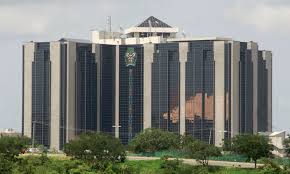
Sanusi, Emefiele, and Cardoso: Three Titans! One CBN! Endless Trials! by Zekeri Idakwo Laruba
From the moment President Bola Ahmed Tinubu unfurled his Renewed Hope agenda, it was clear that Nigeria’s economic governance was in for a seismic shift. Central to that vision is the Central Bank of Nigeria (CBN)—a financial citadel that does not just guard the naira but anchors the nation’s macroeconomic soul.
In the corridors of this mighty institution, past governors have etched bold, controversial, and at times turbulent chapters. Now, under the watchful gaze of a nation in distress, Dr. Olayemi Michael Cardoso steps into the eye of the storm—where reform is urgent, but trust is thin.
To fully understand the magnitude of what Cardoso has inherited, one must look back. Mallam Sanusi Lamido Sanusi, Godwin Emefiele, and now Cardoso—three men, three eras, one institution. Each came bearing credentials. Each faced defining tests. Each left footprints—some bold, some bruised.
*Sanusi Lamido Sanusi: Audacity with Consequence*
Sanusi’s reign from 2009 to 2014 was nothing short of a whirlwind. Armed with intellect and fearlessness, he confronted a post-global crisis financial sector riddled with rot. The “Sanusi Tsunami” toppled corrupt bank chiefs, ushered in AMCON, and won him global acclaim. Transparency became his mantra. But his candour also became his undoing. When Sanusi alleged that billions in oil revenue had gone missing under the Jonathan administration, he crossed the Rubicon.
*Godwin Emefiele: Power, Policy, and Polarisation*
If Sanusi was the reformer with a rebel’s edge, Emefiele was the economist who wielded power with an iron fist cloaked in policy. Appointed in 2014, his early years were shaped by crises—oil price collapses, recession, and the COVID-19 pandemic. But rather than steer with clarity, Emefiele often chose opacity. He enforced currency controls, ran multiple exchange rates, and ballooned Ways and Means lending beyond constitutional bounds. The climax came in 2022 with the infamous naira redesign—a policy rolled out with chaotic speed, triggering a cash crisis that paralysed households and businesses alike.
*Olayemi Cardoso: Quiet Resolve in a Season of Noise*
Then came Cardoso—a seasoned banker, technocrat, and former public finance commissioner—appointed in September 2023. If Nigerians expected another loud or combative governor, they were met with a man of cautious precision. Cardoso inherited not just a beleaguered CBN, but a deeply wounded economy. Inflation above 33%, exchange rates in disarray, a depleted foreign reserve buffer, and a public fast losing faith in the institution’s integrity.
*The Hardest Seat of Them All*
So, who among Sanusi, Emefiele, and Cardoso bore the heaviest burden? Sanusi had political knives drawn on all sides, yes—but he battled amid single-digit inflation and a relatively stable macroeconomic environment. Emefiele, despite contending with economic shocks, contributed heavily to policy distortions that made recovery harder. Cardoso, however, took the reins at a time when inflation was galloping, investor confidence had cratered, and the CBN itself had lost public legitimacy.
*What Comes Next*
Still, Cardoso’s success cannot rely solely on policy strength. In an age where misinformation travels faster than facts, his media team—led by the articulate and deliberate Sidi Hakama—must bridge the chasm between elite decisions and public understanding. Strategy without storytelling risks alienating the very citizens whose patience these reforms depend on.
From Sanusi’s bold defiance to Emefiele’s polarising power play and now Cardoso’s measured technocracy, the CBN has never been short of drama. But what Nigeria needs now is less drama and more direction. In Cardoso, there is a flicker of both—stability and substance. Whether it becomes a legacy depends not just on what policies he enacts, but how deeply Nigerians come to believe that the Central Bank is once again working for them.
